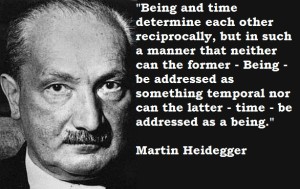In the article Indigenous Epistemology and Education – Self-Determination, Anthropology, and Human Rights Teresa L. McCarty and guest editors focus on indigenous epistemologies and its role with educational systems, human rights and indigenous self-determination. The article first introduces a series of questions that helped to drive the research of the various authors involved as the scholars seem to redefine the indigenous research agenda within, outside, and for the fields of education and anthropology (McCarty, Bargoiakova, Gilmore, Lomawaima, & Romero, 2005). As the authors move through the article, there are different positions taken to look at native people, the oppression that they have encountered, and the lasting effects that are reminiscent today with the loss of language, culture, and community systems. The reading helps define indigenous people and relate their historical experiences to challenges that many still face today. It winds down by recognizing the efforts of research taking place today that is driving to revitalize indigenous epistemologies and reverse many of the negative experiences that have transpired.
In this paper, the researchers worked off prior material that found in previous journals and scholarly research that they could build upon. From my perspective, the author and co-authors were looking to continue the momentum in providing scholarly research with indigenous epistemology and education. The report presented readers with supporting data with statistics that highlighted the author’s position on how indigenous languages and people have been plagued over time. The readings also presented research that showed examples from various researchers who shared common ground in means of results to theirs studies conducted in this line of inquiry, but with different segments of people who were studied. In short, the different areas of research analyzed help to highlight a movement by various research projects that all support similar findings.
From my perspective, one of the main things that were discovered in this study is that there have been some recent success from scholars working in this line of inquiry. The research presented in this article provided excellent insight on indigenous epistemologies and the affect they can have education within different cultures and societies. The report also uncovered a common thread amongst various scholars who hold the same passion for reversing the trends that have negatively affected indigenous people. A positive component to this piece, the authors are very motivated that in time more scholarly research will be conducted in this field, more efforts will be made to reverse the cycle of subjugation, and that the articles and commentaries assembled here lead the way toward these transformations (McCarty, 2005).
The piece to this article that grabbed my attention most was the material focused on how indigenous languages have been driven to near extinction in some cases. I agree with the authors points that, the shift toward English represents a shift away from the indigenous (McCarty, 2005). As I read this part to the reading I immediately reflected on my own personal experience as a Latino growing up in the United States, and how I have been unsuccessful in mastering the Spanish language. The English language was the first language spoken in my home and my parents’ home growing up, although both my parents and grandparents speak Spanish. I recall while growing up asking my parents why I was not taught Spanish as a child and why they did not speak Spanish very often. I was given a very direct answer. My parents both attended catholic school in Arizona growing up. It was common practice in the past that students in this school were not allowed to speak Spanish. If they were caught doing so, they would be reprimanded immediately. An interesting fact is that all of my siblings and myself attended this same catholic school growing up, and none of us speaks Spanish fluently today. Ultimately I found an immediate connection to the authors and point of agreement as they described how society has driven indigenous people, their languages, along with many of their social and cultural practices underground over time.
References
McCarty, T. L., Bargoiakova, T., & Gilmore, P., Lomawaima, K. T., Romero, M. E. (2005). Indigenous Epistemology and Education – Self-Determination, Anthropology, and Human Rights. Anthropology & Education Quarterly, 36(1), 1-7.

